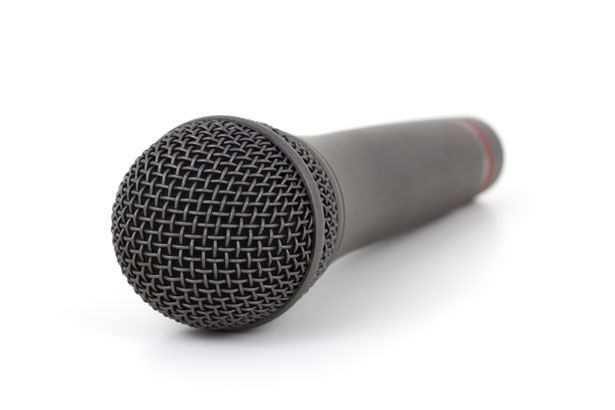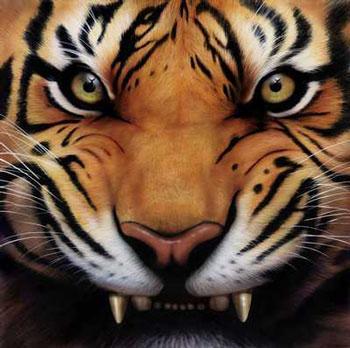
...
Search : -
Saturday, May 19, 2012
Share - History of Gum
History of Gum
Since prehistoric times, people have chewed gum as evidence shows our ancestors chewed tree resin for enjoyment. Greek cultures chewed resin from the mastic tree to freshen their breath. The ancient Mayans chewed chicle sap from the Sapodilla tree that is the forerunner for today's modern chewing gum.
Spruce tree resin and beeswax were popular to chew by the Native Americans and the early settlers. In 1848, John Curtis made the State of Maine Spruce Chewing Gum using the resin from the spruce tree. The gum was sold in lots of two hunks for a penny. Later, paraffin wax replace spruce as a base for gum. William Semple was granted the first patent for chewing gum in 1850.
In 1880, Santa Anna sent his friend, an inventor named Thomas Adams, some chicle sap from Mexico. Adams and Santa Anna were trying to find a way to make money by using the chicle sap. Adams tried mixing it with rubber to make a better tire; however, he decided the mixture was useless. When he overheard someone ask for gum whil he was in a drug store, he tried using just the chicle sap to make chewing gum. He created Black Jack Gum which was licorice flavored and was hugely popular. This was the first gum to be sold in sticks. The only problem was that the flavor could not be maintained.
While experimenting with adding corn syrup and sugar to the chicle gum, William White, an employee of Adams, found the solution to the flavor problem. He added peppermint flavor and it did stay on the gum. In 1888, Adams' gum, Tutti-Frutti, became the first gum sold in vending machines found in the New York subway system.
In the 1900's, William Wrigley promoted chewing gum by advertising on billboards and newspapers. His sale of spearmint gum surged. Today, to grow the mint that Wrigley's needs for its mint flavored gums, it would take 53 square mile of farmland. That equals about 30,550 football fields. All the spearmint grown for Wrigley's gum is grown in the United States. If each stick of gum that is produced annually was laid end to end, it would circle the world 19 times.
During WWII, chewing gum, believed to reduce tension, promote alertness and improve morale, was used by soldiers and its use spread around the world. Sugarfree and surgarless gums were added inth 1950's. Today, sales of surgarless gums outsell regular.
Bubble Gum
The first bubble gum, called Blibbler Blubber was never sold by its
inventor Frank Fleer. However, an employee of the Fleer company, Walter
Diemer, perfected bubble gum when he was experimenting with different
gum recipes. Bubble gum is pink because the manufacture only had that
color available. The color was popular so most bubble gum today remains
pink. The Fleer Company mass produced this form of chewing gum under
the name of Dubble Bubble. People were taught by salesmen how to blow
bubbles.
After WWII, The topps Company added Bazooka bubble gum with "Bazooka Joe" comics. In 1953, the company added baseball cards packaged with the bubble gum.
How to blow a bigger bubble:
Chew gum until the sugar is gone as sugar will not stretch.
How is Chewing Gum Made?
Every type and brand of chewing gum has a specific recipe. All gums use a base either a resin from tropical trees, wax or synthetic products. Sugar, corn syrup, and flavoring are added. These secrets are carefully guarded by manufacturing companies. Ingredients are heated until the mixture is thick like maple syrup, Sorbitol, mannitol or other sweeteners are added to make sugarless gum. The liquid then is cooled and goes through a roller to flatten it for stick gum. Coated gum has an additional process of being cut and then coated with powdered sugar. It sits for 48 hours prior to being candy coated.
 |
| Bear made from chewing gum |
- In 1994, Susan Montgomery Williams blew the largest bubble on record with a diameter of 23 inches.
- Gary Duschl of Virginia hold the Guinness World Record for the longest gum wrapper chain. On March 11, 1965 the official length was measured at 46,053 feet using 1,076,656 gum wrappers. He continues to add to this chain and on July 11, 2005, the chain was 46,733 feet using 1,092,996 wrappers. Duschl began his wrapper in 1965.
- It takes 50 wrappers to make one foot of chain.
- Steve Fletcher holds the record for the largest gum wrapper collection with 5,300 packets.
- The largest piece of chewing gum produced was equal to 10,000 pieces of gum. This was presented to baseball's Willie Mays in 1974.
- Cinnamon, spearmint and peppermint are the most popular flavors.
- One half billion dollars is spent on chewing gum per yer by North American kids.
- The average American chews 300 sticks of gum per year. The age group of 12-24 chews more gum than any other.
- Of the 20 manufacturers of gum in the United States, Wrigley is the largest. The country with the most gum manufacturers is Turkey which has more than 60 companies.
- It does not take 7 years for swallowed gum to pass through the human digestive system. If swallowed, the indigestible ingredients take the same amount of time to pass through the digestive system as any other food that is eaten. Gum is made with indigestible ingredients and should not be swallowed.
Why we Chew?
Modern psychologists state that the tendency
to chew begins in infancy with the urge to suckle milk or a pacifier.
As we grow, we substitute a thumb, blade of grass, a piece of hay, or
pencils. Eventually a better substitute, good flavored chewing gum, was
created.
Top Ten Benefits of Chewing Gum
- Relieves tension and stress
- Relaxing
- Freshens breath
- Helps one to resist the urge to smoke
- Moistens a dry mouth
- Reduces ear discomfort when flying
- Satisfies snack cravings
- Cleans teeth after meals
- Tastes good and has only a few calories
Share - Lelaki itu...

Lelaki itu bukan BANK,
jika hendak apa main oder saja. bila dah dapat terima kasih pun tak ucap.

Lelaki itu bukan KASUT,

Lelaki itu bukan KASUT,
yang kau suka hendak tukar tiap tiap hari.

Lelaki itu bukan TUNGGUL,

Lelaki itu bukan TUNGGUL,
kau datang bila kau memerlukan then kau tinggalkan dia....


Lelaki itu bukan MICROFON,
yang kau suka arah arah dia.

Lelaki itu bukan HARIMAU,

Lelaki itu bukan HARIMAU,
yang garang memanjang,

adakalanya dia manja seperti kucing memerlukan belaian.

Lelaki itu bukan CHEWING GUM,

adakalanya dia manja seperti kucing memerlukan belaian.

Lelaki itu bukan CHEWING GUM,
bila manis kau kunyah,
bila hilang manis dia kau tuiihh tuuihh dia macam tu je.

Lelaki itu bukan BADUT,
bila hilang manis dia kau tuiihh tuuihh dia macam tu je.

Lelaki itu bukan BADUT,
untuk hiburkan kau sambil kau ketawakan dia.
sedangkan apa yang dia lakukan semata untuk kau.ツ

sedangkan apa yang dia lakukan semata untuk kau.ツ

Subscribe to:
Comments (Atom)
Labels
#beautifuloflife
(3)
acsm file
(1)
AF8
(1)
Aidilfitri
(1)
Anang
(1)
Baby
(2)
boy
(2)
Cari
(1)
Cari Jodoh
(1)
Cerpen
(1)
Cute
(1)
Dato’ Dr Hj Mohd Fadzilah Kamsah
(1)
Digital Editions
(1)
Disember
(1)
Doa
(3)
Eminem
(1)
English Song
(3)
epub file
(1)
Facebook
(1)
fans
(1)
forex
(1)
galeri
(1)
Galileo Galilei
(1)
gallery
(1)
Global
(1)
Gold
(1)
Humor
(3)
Income
(1)
Indonesia
(3)
Info
(1)
Insha Allah
(1)
Istidraj
(1)
Justin Bieber
(2)
Kebahagian Dalam Perpisahan
(1)
Krisdayanti
(1)
lagu
(5)
lirik
(5)
Lotus Elise
(1)
love
(3)
Luv
(23)
lyrics
(10)
Maher Zain
(2)
monday
(1)
Mood
(2)
Motivation
(5)
myDoa
(3)
myLife
(43)
myWealth
(1)
Not Afraid
(1)
Official Video
(1)
outdoor
(3)
Passive Income
(1)
pdf file
(1)
pengakap
(2)
personaliti
(1)
personality
(1)
Pesanan
(1)
Rahsia Bulan Kelahiran Anda
(1)
recreation
(2)
rekreasi
(2)
Rossa
(1)
scout
(1)
Shahir
(1)
Share
(62)
Si Pujangga
(1)
Silver
(1)
Somebody To Love Remix ft. Usher
(1)
songs
(13)
Stupidity
(1)
Takbir Raya
(1)
Takdir Cinta
(1)
The Rest of My Life
(1)
Think
(1)
Tone Excel
(1)
Tone Plus
(1)
Tune Talk
(1)
vacation
(2)
video clips
(5)
Wali Band
(1)





.jpg)
